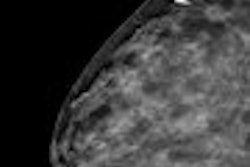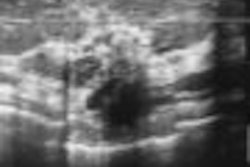Full-field digital mammography (FFDM) is increasingly being accepted in clinical circles for its comparable or better diagnostic performance compared to film-screen mammography (FSM), as well as for reducing the glandular dose of cesium iodide-based detectors. But does FFDM also provide a lower glandular dose than FSM when used with selenium-based detectors?
Researchers from Frankfurt University Hospital in Germany addressed this question in a recent study, seeking to determine the average glandular dose (AGD) in selenium-based FFDM (a-Se FFDM) compared to conventional FSM. They presented their findings at the 2007 RSNA meeting in Chicago.
Out of 250 exams, Dr. Thomas Diebold and colleagues selected 78 a-Se FFDM exams of patients who had also undergone conventional FSM, and compared glandular dose with both methods. They used Mammomat NovationDR for the FFDM exams and Mammomat Nova 3000 (Siemens Healthcare, Erlangen, Germany) for the FSM ones.
Criteria for inclusion in the study were unchanged parameters for breast thickness, glandularity, and compression force in FSM and FFDM. Patients who had undergone interval surgery and those with mammographic lesions not previously visible were excluded.
For a-Se FFDM, tungsten/rhodium was used as an anode/filter combination for all patients, while molybdenum/molybdenum was used in 56 FSM cases and tungsten/rhodium for 22 FSM cases. The team found that when a-Se FFDM was used, patients received lower radiation doses.
|
The mean dose reduction per image with the selenium-based FFDM was 41%, compared to FSM, and the maximum dose reduction was 61%.
The use of selenium-based FFDM significantly reduced the average glandular dose, and the percentage of dose reduction found in the study was comparable to published data in regard to cesium iodide-based detectors, Diebold and colleagues concluded.
By Kate Madden Yee
AuntMinnie.com staff writer
January 23, 2008
Related Reading
All-digital mammography for breast cancer screening not cost effective, December 31, 2007
Making dollars and sense out of Medicaid and FFDM reimbursement, December 27, 2007
More DMIST analysis supports FFDM in younger women, dense breasts, November 26, 2006
Copyright © 2008 AuntMinnie.com




















